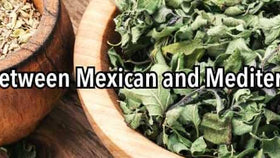The Smell of Vanilla, a Connection Between Moisture and Aroma in Vanilla Beans
Why Do Vanilla Beans Smell and What Does Moisture Have to do with Aroma?
Have you ever opened a bag of freshly received vanilla beans and taken a good strong whiff and thought to yourself, OMG these vanilla beans smell so darn good? We have and it made us wonder a couple things: What should we bake and why does vanilla smell so good?
The Role of Moisture in Vanilla and the Aroma of Vanilla Beans
Moisture, as it turns out, is an unsung hero in the world of spices and aromatic ingredients. When it comes to vanilla beans and spices, moisture content is directly linked to their aroma and flavor. Here's why:
Retaining Volatile Compounds
The captivating aroma of vanilla beans primarily comes from the presence of volatile organic compounds, around 200 plus volatile organic compounds. These compounds are responsible for the characteristic scent and flavor of these ingredients. However, they are highly sensitive to environmental factors, with moisture being a key player that helps retain volatile compounds and the chemical aspects that transmit flavor and aroma.
As moisture levels decrease, the volatile compounds tend to evaporate quicker. This means that when your vanilla beans lose moisture, they lose these precious aromatic compounds too. So, that enticing fragrance you love? It's closely tied to the moisture within the vanilla beans.
Oxidation and Flavor Loss
Moisture doesn't just affect the volatile compounds; it also influences the chemical reactions that take place within the vanilla beans. When moisture is present, it acts as a barrier against oxidation, which can cause flavor deterioration. As moisture decreases, vanilla beans become more vulnerable to the effects of oxygen, resulting in a loss of flavor intensity. Have you ever noticed the difference in aroma between a gourmet vanilla bean from Tahiti and a dry industrial grade vanilla for vanilla extract? The difference in aroma is actually quite stunning. As moisture decreased, it actually becomes harder to even smell the subtle nuances of floral, fruity or even the rich buttery characteristics that Bourbon vanilla is known for.
Think of it like a protective shield – moisture protects the aromatic and flavor compounds from breaking down due to exposure to air and light. Once that shield is weakened, the flavor and aroma suffer making it harder for you to smell your vanilla beans.
Longevity and Storage
Properly storing vanilla beans is crucial for maintaining their aroma and flavor. The moisture content in these ingredients plays a pivotal role in determining their shelf life. When moisture levels are too low, the beans can become brittle and prone to breakage, which allows more exposure to air and hastens flavor loss if not used or stored correctly. Do not throw your dry vanilla bean out. Dry vanilla beans are great for making vanilla extract because the introduction of alcohol to the vanilla beans extracts the flavor and moisture conveys the aroma of the vanilla in the alcohol and the recipes you will use your extract in.
On the other hand, excessive moisture can lead to mold growth and spoilage. It's all about finding the right balance, which allows vanilla beans to retain their aroma and flavor while extending their longevity. During the curing process of vanilla, the reduction of moisture to just the right level plays a huge role in vanilla stabilization. Stabilizing the water activity of vanilla beans greatly reduces the chance of mold and further degradation of the vanilla.
Interesting fact about vanilla beans from Tahiti: Gourmet Tahitian vanilla that is grown in French Polynesia, is the only vanilla that is fully stable at 45% to 50% moisture. Other gourmet type vanilla's such as v. planifolia is stable closer to 29-32 percent moisture.
How to Preserve Aroma in your vanilla beans
Now that we understand the connection between moisture content and the aroma of vanilla beans, let's discuss some practical tips to preserve their beloved fragrance:
Store in Airtight Containers:
Keep your vanilla beans in airtight containers to minimize exposure to air and additional moisture.
Store in a Cool, Dark Place:
Store these ingredients in a cool, dark place to prevent oxidation and moisture evaporation from heat and light.
Avoid Humidity:
Ensure your storage area is dry and free from excessive humidity to prevent mold growth. Excessive amounts of humidity could cause vanilla beans to further sweat and create an environment where mold can grow if humidity builds up on the outside surface of the pods.
Use Moisture Packs:
Adding moisture packs to your vanilla bean containers can help maintain the right moisture balance and could help if your home has excessive amounts of humidity during certain times of the year.
When Buying Whole Beans:
Once opened, reseal using a household vacuum sealer when possible. If this is not possible, try wrapping in thick food-grade wax paper and then place vanilla beans in a Ziplock bag or another Tupperware-type container.
Maintaining that wonderful vanilla aroma as long as possible:
The next time you marvel at the rich aroma of vanilla beans, remember the crucial role that moisture content plays in preserving their allure. By understanding this connection and taking proper storage precautions, you can ensure that your vanilla beans maintain their delightful aroma, enhancing your culinary adventures for years to come.







Slofoodgroup
Author